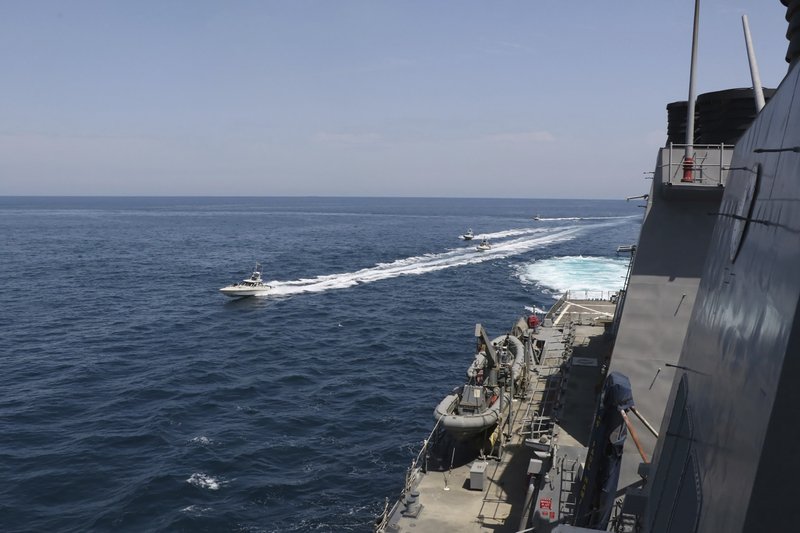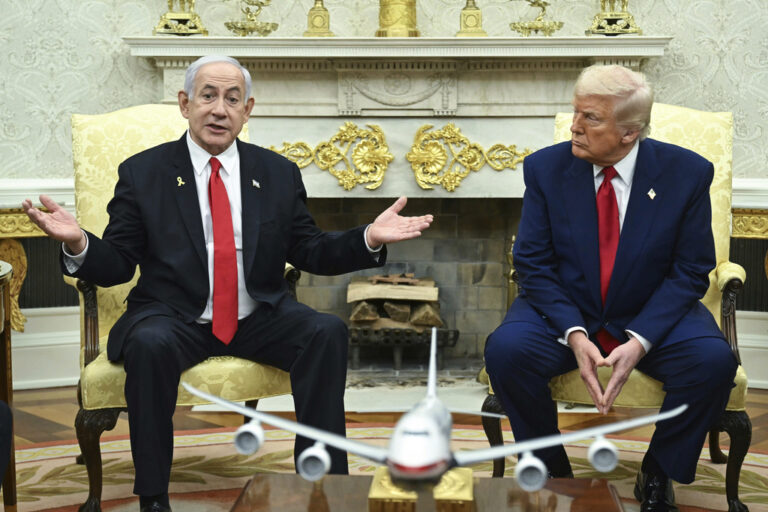Tensions between Washington and Tehran flared anew Wednesday as Iran’s Revolutionary Guard conducted a space launch that could advance the country’s long-range missile program and President Donald Trump threatened to “shoot down and destroy” any Iranian gunboats that harass Navy ships.
The launch was a first for the Guard, revealing what experts described as a secret military space program that could accelerate Iran’s ballistic missile development, which is a major source of U.S. and international criticism. American officials said it was too early to know whether an operational Iranian satellite was successfully placed into orbit. Trump’s top diplomat accused Iran of violating U.N. resolutions.
After Iran’s announcement, Trump wrote on Twitter, without citing any specific incident: “I have instructed the United States Navy to shoot down and destroy any and all Iranian gunboats if they harass our ships at sea.”
Last Wednesday, the U.S. Navy reported that 11 Guard naval gunboats had carried out “dangerous and harassing approaches” to American Navy and Coast Guard vessels in the Persian Gulf. The Americans used a variety of nonlethal means to warn off the Iranian boats, and they eventually left. Such encounters were relatively common several years ago, but have been rare recently.
Iran said the U.S. was to blame for the incident.
Conflict between Iran and the U.S. escalated after the Trump administration withdrew from the international nuclear deal between Tehran and world powers in 2018 and reimposed crippling sanctions. Last May, the U.S. sent thousands more troops, including long-range bombers and an aircraft carrier, to the Middle East in response to what it called a growing threat of Iranian attacks on U.S. interests in the region.
The tensions spiked when U.S. forces killed Iran’s most powerful general, Qassem Soleimani, in January. Iran responded with a ballistic missile attack on a base in western Iraq where U.S. troops were present. No Americans were killed but more than 100 suffered mild traumatic brain injuries from the blasts.
At the Pentagon on Wednesday, the vice chairman of the Joint Chiefs of Staff, Gen. John Hyten, a former commander of American nuclear and space forces, welcomed Trump’s tweet as a useful warning to Iran. He drew a parallel between last week’s naval encounter in the Gulf and Wednesday’s space launch, which said was “just another example of Iranian malign behavior.”
“And it goes right along with the harassment from the fastboats. … You put those two things together and it’s just more examples of Iranian malign behavior and misbehavior,” Hyten said.
Iran considers the heavy U.S. military presence in the Middle East a threat to its security.
Trump did not cite a specific Iranian provocation in his tweet or provide details. Senior Pentagon officials gave no indication that Trump had directed a fundamental change in military policy on Iran.
“The president issued an important warning to the Iranians,” David Norquist, the deputy secretary of defense, said at a Pentagon news conference when asked about the tweet. “What he was emphasizing is, all of our ships retain the right of self defense.” Norquist called the tweet “a very useful thing.”
Rep. Elaine Luria, a Virginia Democrat and Navy veteran, said Trump’s tweeting could lead to war.
“The president’s continued issuing of orders to our military via tweet is a threat to our national security and, if followed without clear guidance and rules of engagement, will unnecessarily escalate tensions with Iran and possibly lead to all-out-conflict,” she said.
Hyten said he thinks the Iranians understand what Trump meant. Asked whether the tweet means a repeat of last week’s incident in the Gulf would require a lethal U.S. response, Hyten said, “I would have to be the captain of the ship in order to make that determination.” The nature of the response, he said, “depends on the situation and what the captain sees.”
Gen. Abolfazl Shekarchi, a spokesman for Iran’s armed forces, accused Trump of “bullying” and said the American president should focus on caring for U.S. service members infected with the coronavirus. The U.S. military has more than 3,500 confirmed cases of coronavirus, and at least two service members have succumbed to COVID-19, the disease the virus causes.
The space launch has potentially bigger implications for conflict with Iran. U.S. officials believe it is intended to advance Iran’s development of intercontinental-range ballistic missiles that could threaten the U.S.
Using a mobile launcher at a new site, the Guard said it put a “Noor,” or “Light,” satellite into a low orbit circling the Earth. Iranian state TV late Wednesday showed footage of what it said was the satellite, and said it had orbited the earth within 90 minutes. State TV said the satellite’s signals were being received.
Hyten said it was too soon to know whether the launch had successfully placed a satellite in orbit. He said U.S. tracking technology showed that the launch vehicle had traveled “a very long way, which means it has the ability once again to threaten their neighbors, their allies, and we want to make sure they can never threaten the United States.”
Secretary of State Mike Pompeo said the United Nations needs to evaluate whether the space launch was consistent with Security Council resolutions. “I don’t think it remotely is, and I think Iran needs to be held accountable for what it’s done,” Pompeo said.
(AP)











